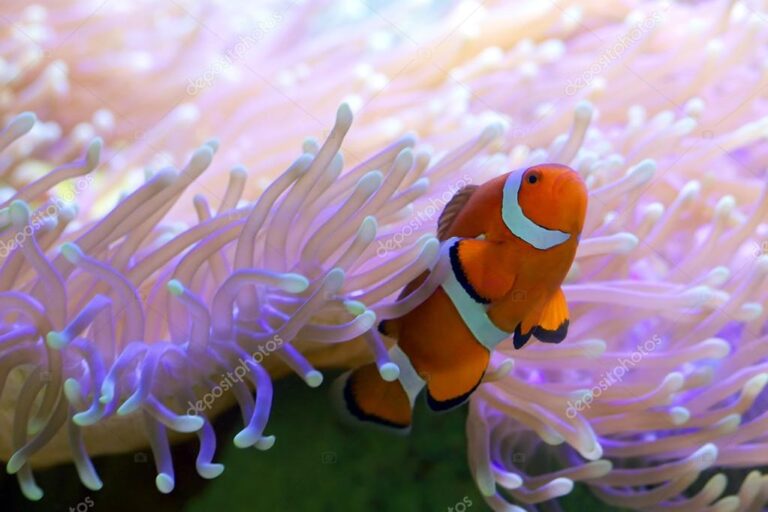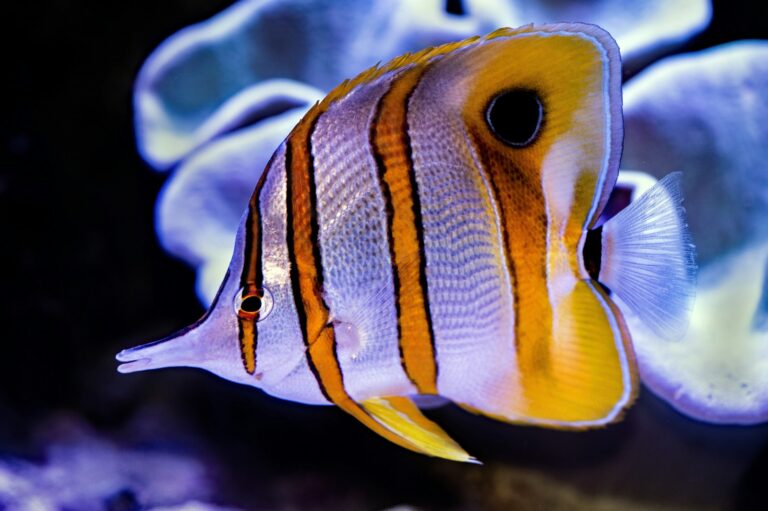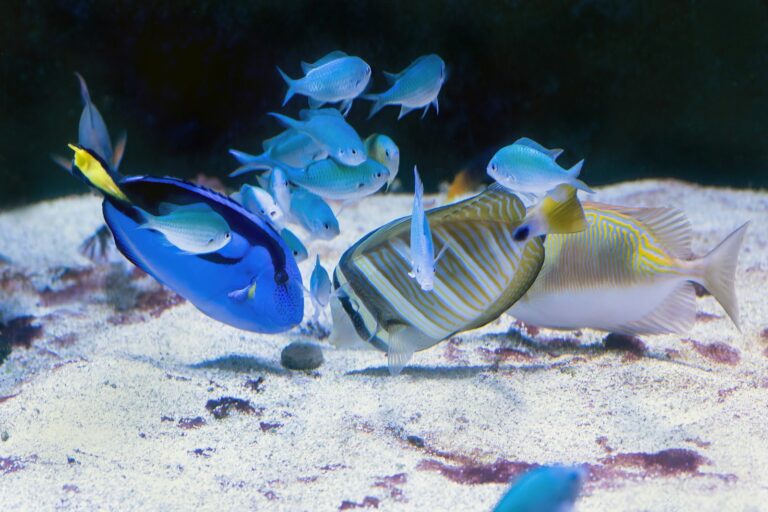Angelfish in Saltwater Aquariums: A Complete Guide for Hobbyists

Introduction to Angelfish in Saltwater Aquariums
The captivating beauty of angelfish has made them a favorite among saltwater aquarium enthusiasts. Known for their unique patterns, vibrant colors, and graceful movement, these fish are showstoppers in any tank. However, keeping angelfish comes with its own set of challenges, especially for those venturing into saltwater aquariums for the first time.
If you’re ready to level up your aquarium hobby and introduce these stunning creatures into your tank, you’re in the right place. This blog will cover everything from selecting the right species to maintaining their health, ensuring your angelfish thrive in their new aquatic home.

Choosing the Right Angelfish Species
There are numerous species of saltwater angelfish, each with its own care requirements, compatibility considerations, and tank size preferences. Here are some of the most popular options for aquarium enthusiasts:
Small Angelfish (Dwarf Angelfish)
- Coral Beauty (Centropyge bispinosa): A hardy species with vibrant blue and orange hues. Perfect for smaller tanks (over 55 gallons) and beginner hobbyists.
- Flame Angelfish (Centropyge loricula): Striking red body with vertical black stripes. Flame angelfish require meticulous tank conditions but are stunning additions.
Medium to Large Angelfish
- Emperor Angelfish (Pomacanthus imperator): A majestic species known for its intricate stripes and bold yellows. Requires at least 125 gallons and is better suited for experienced keepers.
- Queen Angelfish (Holacanthus ciliaris): With vibrant yellows and blues, this species stands out but demands excellent water quality and dietary attention.
“Different angelfish have varying levels of compatibility and care needs,” advises Dr. Emily Carter, a marine biologist. “Research thoroughly to ensure you’re selecting a species that aligns with your experience level and tank size.”
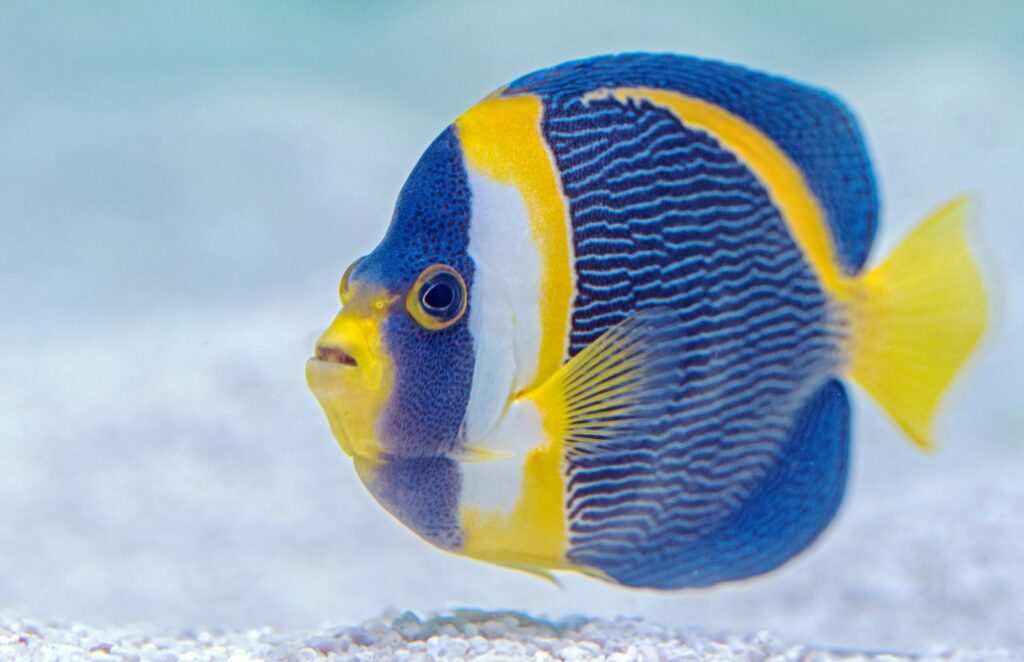
Setting Up the Ideal Tank Environment
Creating the perfect environment is vital to the health and happiness of your angelfish. Here’s a step-by-step guide to setting up their tank:
Tank Size
- Dwarf angelfish thrive in tanks of at least 55 gallons, while larger species may require 125 gallons or more.
- Bigger tanks reduce the risk of territorial disputes, ensuring a peaceful community tank.
Water Parameters
- Temperature: Maintain a range of 75–82°F.
- Salinity: Keep salinity levels between 1.020 and 1.025 specific gravity using a hydrometer or refractometer.
- pH Levels: Aim for a pH of 8.1–8.4.
“Maintaining pristine water conditions is paramount for the health of angelfish,” emphasizes Dr. Emily Carter.
Aquascaping
- Use plenty of live rock to replicate their natural habitat. This provides hiding spots and grazing areas.
- Leave enough open swimming space, especially for larger species.
Filtration & Lighting
- Install a robust filtration system to handle waste and maintain water clarity.
- Use adjustable lighting to create a comfortable and visually appealing tank.

Proper Diet and Feeding Techniques
A balanced diet is the key to vibrant, healthy angelfish. These omnivores require a mix of meaty proteins and plant-based foods.
Dietary Recommendations
- Meaty Foods: Brine shrimp, mysis shrimp, and chopped seafood.
- Algal-Based Foods: Nori sheets or specialized angelfish pellets with spirulina.
“A varied diet, including both meaty and algal-based foods, will keep your angelfish vibrant and healthy,” shares John Doe, an experienced hobbyist.
Feeding Tips
- Feed 2–3 small meals daily instead of one large feeding to mimic their natural grazing behavior.
- Observe their eating habits to ensure all individuals are getting enough food.
Common Diseases and Prevention
Saltwater angelfish are susceptible to certain diseases, but proactive measures can help you avoid common issues.
Recognizing Diseases
- Marine Ich (Cryptocaryon): Symptoms include white spots and scratching against surfaces.
- Velvet Disease: Causes a golden, velvet-like appearance and rapid breathing.
Prevention Tips
- Quarantine new fish for 2–4 weeks to prevent introducing diseases into your tank.
- Perform regular water changes (20% every 2 weeks) to maintain optimal water quality.
“Observe your angelfish daily for signs of stress or disease. Early detection is key to successful treatment,” advises Jane Smith, an aquarium specialist.
Case Study
One hobbyist, Samantha, successfully treated a coral beauty with marine ich by isolating it in a quarantine tank, gradually raising the temperature, and using a copper-based medication. The fish made a full recovery within two weeks—a testament to the importance of early action.
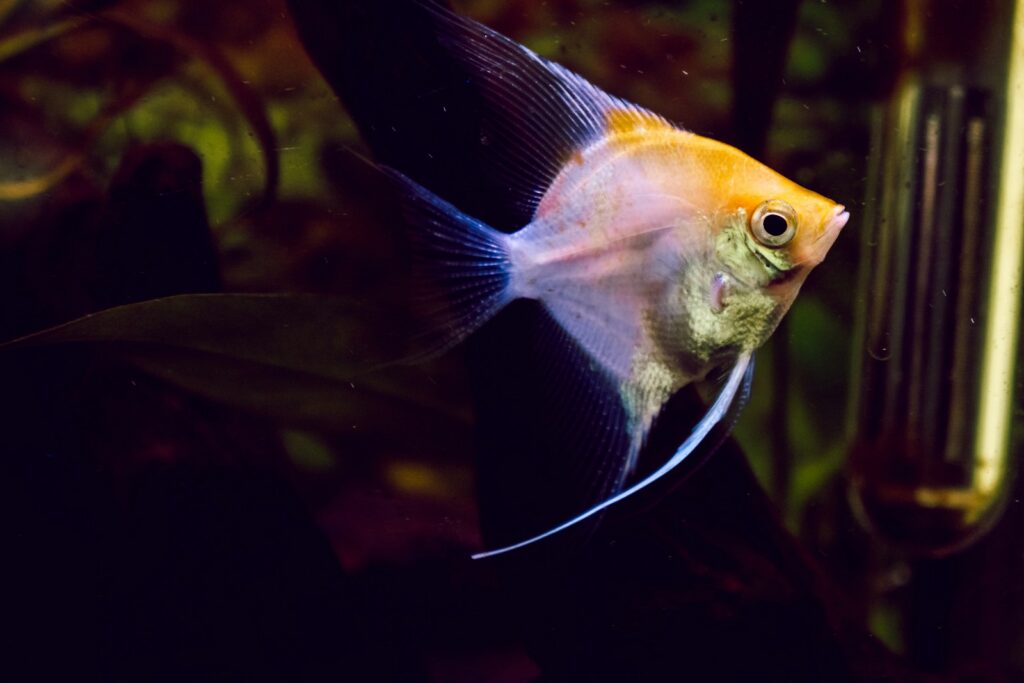
Compatibility with Other Fish Species
Angelfish are often semi-aggressive, particularly when establishing territory. Careful selection of tank mates can minimize clashes.
Compatible Species
- Gobies, blennies, clownfish, and tangs often coexist peacefully with angelfish.
- Larger tanks promote harmony by giving fish more space to establish their territories.
Avoid These Tank Mates
- Avoid hyper-aggressive fish such as triggerfish or fin-nipping species like certain damsels.
- Housing multiple angelfish is risky unless the tank is large enough to reduce tension.
The Allure of Angelfish in Saltwater Aquariums
There’s something undeniably captivating about saltwater angelfish. Their vibrant colors, graceful movements, and unique personalities make them a centerpiece in any aquarium. While keeping them requires meticulous care, the rewards far outweigh the effort.
By choosing the right species, creating a suitable environment, feeding a balanced diet, and staying vigilant about health and compatibility, you can enjoy a thriving saltwater aquarium filled with the beauty and intrigue of angelfish.
Are you ready to take the plunge? Start with thorough research, and don’t hesitate to reach out to experienced hobbyists or marine specialists for guidance. With patience and dedication, your angelfish tank can become a mesmerizing underwater oasis.


